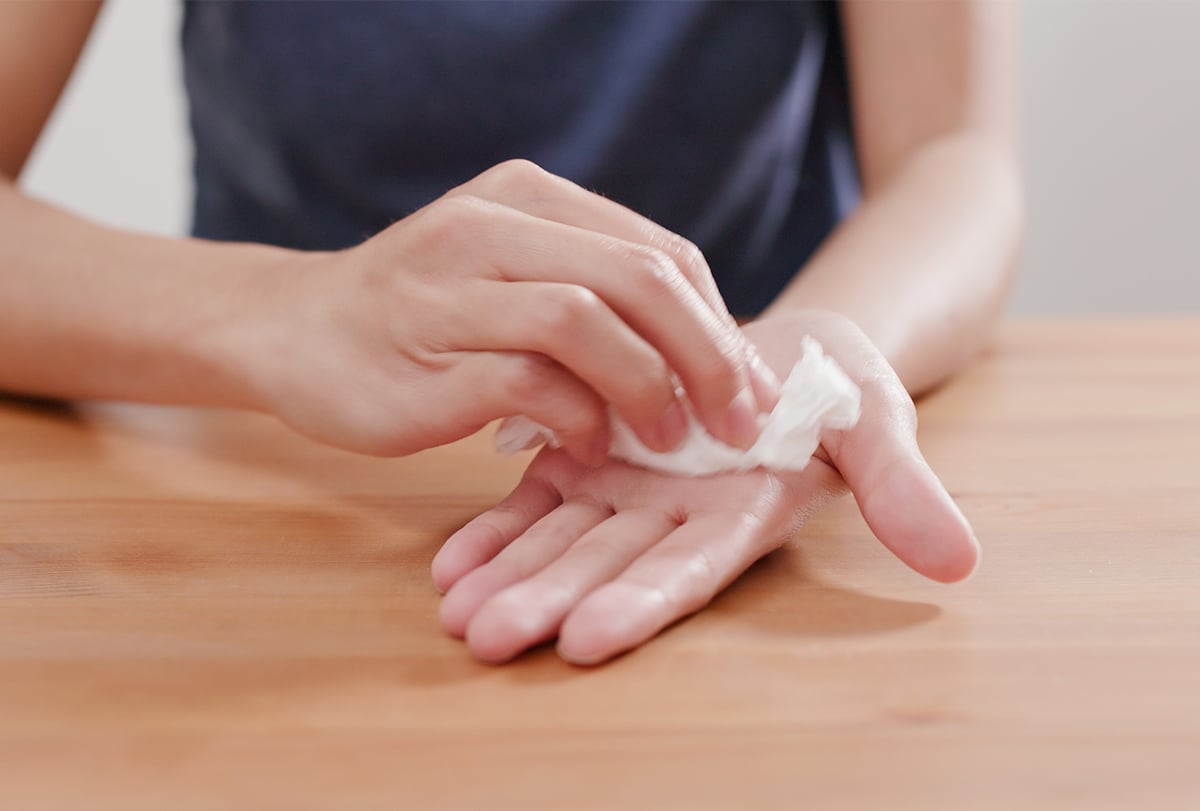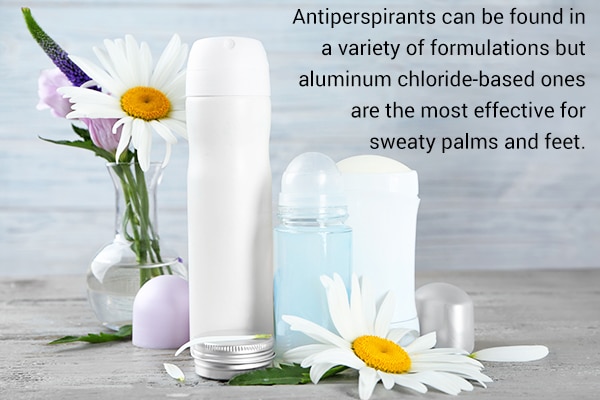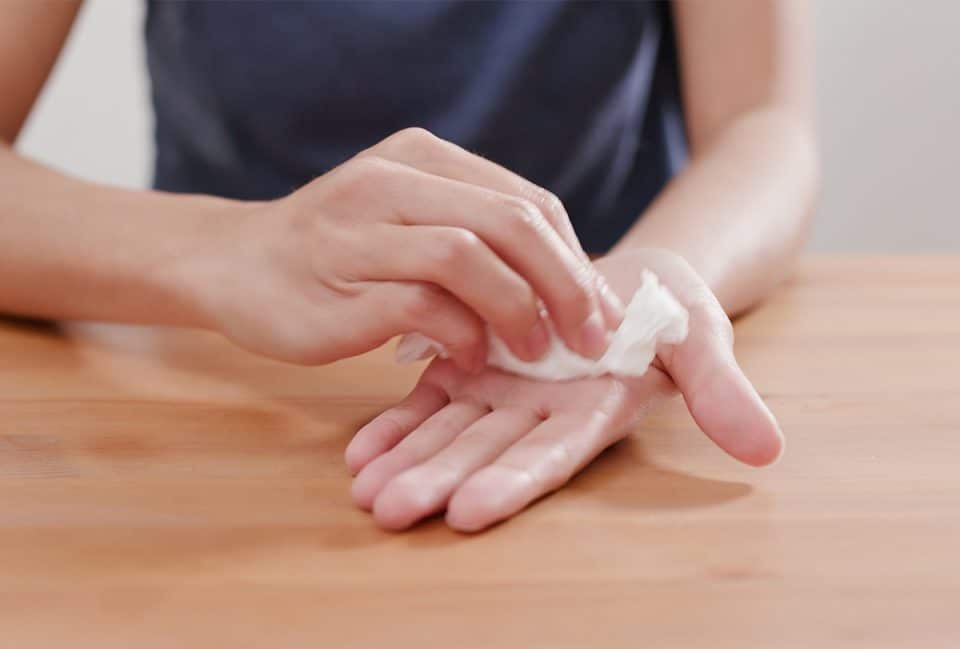Sweaty palms and feet are common and affect a lot of people during summertime. However, if you find yourself constantly sweating from your hands, no matter the weather, it may be due to a medical condition known as ‘hyperhidrosis’. (1)(2)

Hyperhidrosis is a rare condition that leads to overproduction of sweat usually on the extremities like hands and feet. It occurs due to over activity of the nerves which can affect the sweat glands. (3)
Let us take a deeper look at the condition and its possible treatments.
Types of Hyperhidrosis
Hyperhidrosis can be of two types:
Primary hyperhidrosis has no underlying cause and could simply be due to overactive sweat glands. It may be a hereditary condition and can be observed in families. It can affect the entire body or some parts such as the hands, feet, armpits, etc., of a person. (4)
Secondary hyperhidrosis arises due to an underlying medical condition that can cause excessive sweating. It can be a permanent issue or a temporary one based on the causative factors. Some conditions that can lead to secondary hyperhidrosis are: (5)
Causes That Lead to Sweaty Palms and Feet
The sympathetic nervous system is responsible for maintaining our body’s reactions to stress or danger. It elevates hormone levels, increases heart rate and blood flow, and also activates the sweat glands to cool the body down.
However, in people suffering from hyperhidrosis, the sympathetic nervous system seems to be overstimulated and leads to excess sweating even when it is not needed. There is usually no trigger cause for primary hyperhidrosis.
Secondary hyperhidrosis can be caused due to other factors like heat, anxiety, and certain medical conditions listed above. (6)
Treatment for Sweaty Palms and Feet

There are a few over-the-counter as well as prescription treatment options for hyperhidrosis. These include:
Non-surgical treatment of hyperhidrosis
1. Over-the-counter (antiperspirant)
You can try using antiperspirants for mild to moderate cases of hyperhidrosis. They are applied topically and can be found in the form of lotions, powders, wipes, roll-ons, etc., and help decrease sweat and body odor. (7) Antiperspirants can be found in a variety of formulations but aluminum chloride-based ones are the most effective. (8)
2. Oral medication
Your doctor can prescribe you some oral medicines such as anti-cholinergic drugs that may help reduce sweat production. Anticholinergic medicines can have a drying effect on the body and cause dry mouth, eye dryness, and constipation in some people. (9)
3. Prescription creams
Your doctor may prescribe topical medications such as aluminum chloride hexahydrate that can help reduce sweating in palms and on the face. Such creams can be applied to these areas. (10)
4. Nerve-blocking medications
Certain medications can help block nerve signals and prevent overstimulation of the sympathetic nerves to reduce sweating. However, they may have certain side effects such as dizziness.
5. Antidepressants
If you suffer from anxiety as well as hyperhidrosis, your doctor may prescribe an antidepressant to help treat both conditions.
Other procedures include:
1. Iontophoresis
Iontophoresis is a non-invasive procedure performed by dermatologists that can help with sweat reduction. (11)
It involves the application of very low levels of electric currents to sweaty areas of skin. Iontophoresis has an 80% success rate according to some studies. However, it requires several sessions to work effectively. (7)
2. Microwave therapy
It is also performed in a dermatologist’s office or clinic. Low level microwave rays are applied to the sweat glands usually in two 30-minute sessions. This can help decrease sweat production. (12)
3. Botulinum toxin type A (brand name: Botox)
Some doctors recommend Botox injections for extremely high sweating. Botox injections also have a good success rate of sweat reduction and the effects may last several months. (13)
4. Endoscopic thoracic sympathectomy (ETS)
This is a last resort treatment that is only used when other therapies do not work. ETS is a surgical procedure where the nerve pathways to the palms of your hands are removed or eliminated. This can reduce sweating in people with abnormally high sweating. (14)
Disclaimer: All the treatments listed above have side effects and complications. You can ask your doctor about the pros and cons of each procedure before starting treatment.
Diagnosis of Sweaty Palms and Feet
Hyperhidrosis can be diagnosed by your primary care physician after some examination. The doctor may ask you some questions about your medical history to determine whether it is primary or secondary hyperhidrosis. They may even ask you to undergo some screening tests such as:
1. Blood and urine tests
Your doctor may prescribe some blood or urine tests to rule out any underlying medical conditions such as diabetes or hyperthyroidism.
2. Palmar hyperhidrosis tests
- Starch-iodine test: A starch iodine test can be performed on any area of the body. An iodine solution is applied on the area and left to dry. A starch powder is sprinkled on it and the areas that have excessive sweating turn dark blue in color. (15)
- Paper test: A special absorbent paper is placed on the sweaty palms or other area for a specific amount of time. It absorbs the sweat and is later weighed to determine the amount of sweating.
Complications Associated With Sweaty Palms and Feet
While excess sweating may not be a major health concern, it can still cause mental stress, embarrassment and affect a person’s social life.
When to See a Doctor
Sweaty palms and feet may not feel like a medical concern but you can consult a doctor if:
- You have abnormally high levels of sweat production.
- Your sweating interferes with your daily routine or social activities.
- You have anxiety, pounding heartbeat, or breathlessness.
- You have a fever that is not reducing even after a day or two.
- You have unexplained weight loss.
What you may ask your doctor
- What tests do I need to undergo?
- What is the best treatment approach for me?
- Are there any lifestyle changes I need?
- Are there any serious health issues attached to my condition?
What your doctor may ask you
- Do you have any other symptoms apart from the excess sweating?
- Is the excess amount of sweat affecting your social life and mental well-being?
- Can I know your medical history?
Final Word
Sweaty feet and palms can be a harmless yet embarrassing condition to go through. However, you are not alone and there are millions of people around the world who suffer from it.
Use an antiperspirant and deodorant every day, shower regularly, and try wearing light clothes to remain fresh for as long as possible. If the problem persists, consult a doctor for medical treatment.
Continue Reading
7 Home Remedies for Sweaty Palms and Feet

